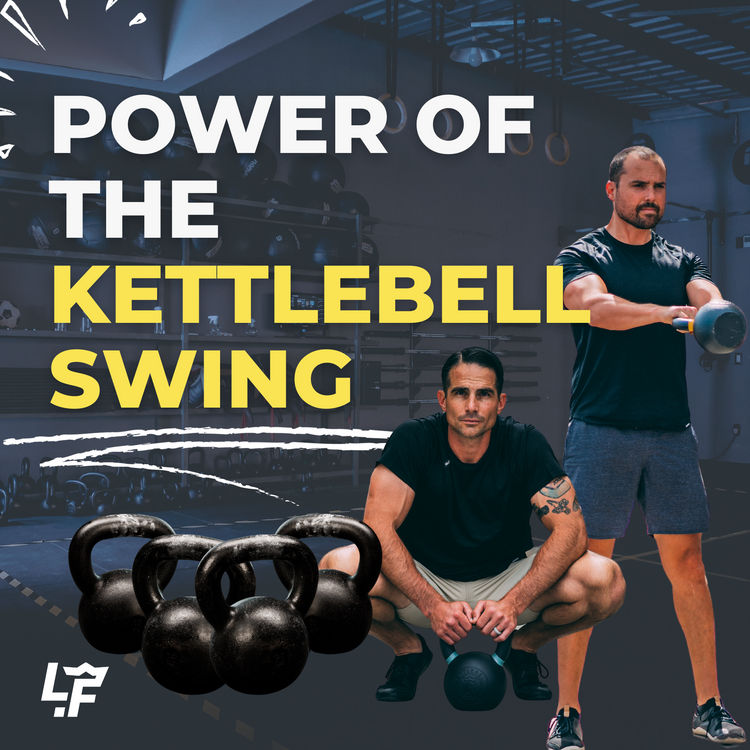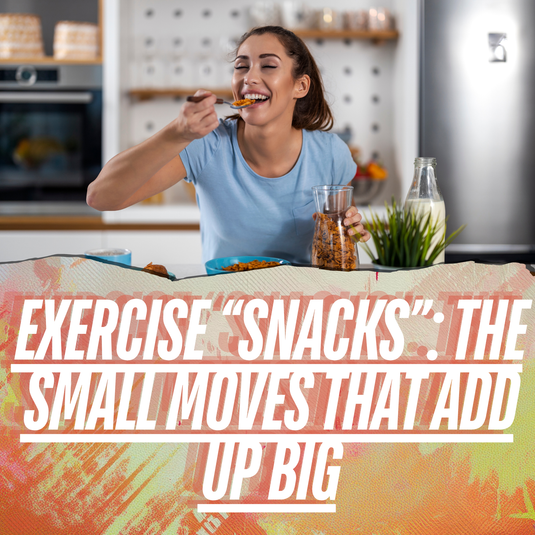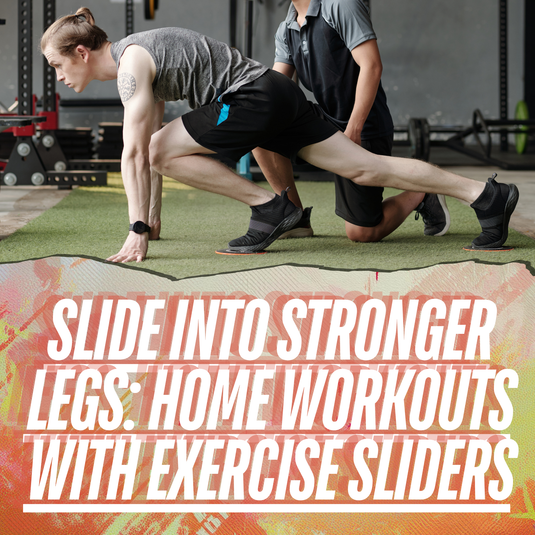Kettlebell Swings: Unleash Their Power

⏱️ Estimated Read Time: 6 minutes
🧠 TL;DR
- Kettlebell Swings: Unleash Their Power offers effective, accessible movements for targeted results.
- This guide is designed to help you move smarter, build strength, and stay consistent.
✍️ Summary
This post explores kettlebell swings: unleash their power in a way that’s actionable and easy to follow. Whether you're new to this style of training or leveling up, it includes practical takeaways for your routine.
📚 Table of Contents
Swinging a kettlebell is a mainstay movement in almost all strength and conditioning programs and fitness regimens globally. How can a seemingly simple exercise like swinging a kettlebell reap such excellent results? But what exactly is a kettlebell swing, and how can it help you achieve your fitness goals?
In this comprehensive guide, we will delve into kettlebell swings, addressing their techniques, benefits, and the various considerations that can help you get the most out of this exercise.
What is a Kettlebell Swing?

A kettlebell swing is a full-body exercise involving a weighted kettlebell in a pendulum-like motion. The movement primarily targets the posterior chain, including the glutes, hamstrings, and lower back, but it also engages the core, shoulders, and arms. Kettlebell swings are a dynamic and explosive movement that combines strength and cardiovascular elements, making them an efficient and time-effective workout.
According to a study published in the Journal of Strength and Conditioning Research, kettlebell swings have been shown to improve power and strength in the lower body, making them a valuable addition to any fitness routine.
What is It Good For?
Kettlebell swings offer a wide range of benefits.
- Fat Loss: Kettlebell swings are excellent for fat loss because they engage multiple muscle groups, leading to increased calorie expenditure. This exercise is particularly effective at targeting stubborn belly fat.
- Muscle Toning: They help tone and strengthen the glutes, hamstrings, and lower back, resulting in a more sculpted and defined physique.
- Cardiovascular Health: Kettlebell swings elevate your heart rate, providing a cardiovascular workout that can help improve endurance and stamina.
- Improved Posture: The exercise strengthens the lower back, which can help alleviate back pain and improve posture.
- Time Efficiency: Kettlebell swings offer a full-body workout in a short amount of time, making them perfect for those with busy schedules.
Do Kettlebell Swings Reduce Body or Belly Fat?
Kettlebell swings are indeed effective for reducing body fat. The dynamic nature of the exercise elevates heart rate and engages multiple muscle groups, promoting fat loss. However, it's essential to complement kettlebell swings with a balanced diet and other forms of exercise for the best results.
A study by the American Council on Exercise (ACE) found that kettlebell swings can burn up to 20 calories per minute, making them one of the most effective calorie-burning exercises (Porcari et al., 2013).
How Many Kettlebell Swings a Day to Lose Belly Fat?
The number of kettlebell swings you should perform daily to lose belly fat can vary depending on your fitness level, diet, and overall routine. A general guideline for beginners is to start with three to five sets of 10-15 swings per set, gradually increasing the volume as your fitness improves. However, it's essential to focus on quality over quantity and ensure proper form to prevent injury.
Want to Try Kettlebell Workouts That Burn Visceral Fat? Get Access to 16 Different Kettlebell Workouts + Create Your Own With a Workout Generator! Follow on desktop or mobile!
When You Sign Up, Get Access to All Workouts and Movement Demos on Computer or Mobile App
What Kind of Body Will Kettlebell Swings Give You?
Kettlebell swings will help you build a strong and lean physique. Regular practice will result in a more defined lower body, improved posture, and a stronger core. While kettlebell swings contribute to muscle toning, they won't lead to excessive muscle mass gain. Instead, they provide a balance between strength and cardiovascular fitness.
What is a Good Kettlebell Weight for Beginners?
Choosing the right kettlebell weight is crucial for safety and effectiveness. For beginners, a kettlebell weight of 8-16 kilograms (18-35 pounds) is a good starting point for most individuals. It's essential to select a weight that challenges you without compromising your form.
What Muscles Do Kettlebell Swings Work On?
Kettlebell swings primarily target the muscle glutes, hamstrings, quadriceps, erectors, trapezius, rhomboids, deltoids, and abdominals.
- Glutes: The glutes are heavily engaged during the hip thrust motion of the swing.
- Hamstrings: The hamstrings are essential for the swing's concentric and eccentric phases.
- Lower Back: The lower back muscles play a significant role in stabilizing the spine during the swing.
- Core: The core muscles, including the rectus abdominis and obliques, stabilize the body throughout the movement. The upper body is in a plank position in the core.
- Shoulders and Arms: These muscles are used for grip and control of the kettlebell.
How Long Should One Do Kettlebell Swing?
The duration of a kettlebell swing workout can vary depending on your fitness level and goals. A typical session for beginners might last 15-20 minutes, including rest periods. Advanced practitioners may extend their workouts to 30-45 minutes. The key is to maintain proper form and focus on intensity rather than duration.
How Heavy Should Kettlebell Swings Be?
The weight of the kettlebell you choose should be challenging but manageable. For women, kettlebell weights ranging from 8 to 20 kilograms (18-44 pounds) are appropriate for most fitness levels. As you progress, you can gradually increase the weight.
Should I Do More Reps or Heavier Kettlebells?
The choice between more reps or heavier kettlebells depends on your fitness objectives. If your primary goal is fat loss and cardiovascular fitness, higher reps with a moderate weight will be more effective. On the other hand, if you aim to build strength and muscle, using a heavier kettlebell with lower reps is the way to go.
Are Heavy or Light Kettlebell Swings Better?
The choice between heavy and light kettlebell swings depends on your goals. There is an inverse relationship between the load you use with a kettlebell swing and amount of reps you do. More reps mean greater endurance challenge and should be done with lighter loads, while fewer reps would produce more significant changes in strength and power and should be done with heavier kettlebells. A balanced approach can incorporate light and heavy kettlebell swings into your routine.
How Many Kettlebell Swings Equal a Mile?
On average, it takes approximately 1,000 to 1,500 kettlebell swings to cover the equivalent distance of one mile. However, this can vary based on factors like the weight of the kettlebell and the swing intensity.
How Many Kettlebell Swings Should I Do a Day?
The number of kettlebell swings you should do daily depends on your fitness level and goals. Beginners might start with 50-100 swings a day, while more advanced practitioners can perform up to 300 swings daily. It's crucial to listen to your body and avoid overtraining.
What Will Happen If I Do 100 Kettlebell Swings a Day?
Performing 100 kettlebell swings a day can yield several benefits. It will contribute to increased calorie expenditure, leading to potential fat loss and improved muscle tone. However, it's essential to ensure proper form and gradually increase the number of swings to prevent overuse injuries.
Is a 20-Minute Kettlebell Workout Enough?
Repeat after me: "Something is always better than nothing!" A 20-minute kettlebell workout can be sufficient if it is intense and structured effectively. You can focus on a few movement patterns or work in high-intensity interval training (HIIT) with kettlebells in a short timeframe. Either will have health benefits. The key is the intensity with which you do things and the goal for doing them. More time to move is always better, but you can make significant physiological changes in just twenty minutes.
Unlock the Kettlebell Swing. Get Access to Tutorials + 16 Different Kettlebell Workouts + Create Your Own With a Workout Generator! Follow on desktop or mobile!
Are Kettlebell Swings Better Than Squats?
Kettlebell swings and squats are both valuable exercises that target different muscle groups. Swings primarily focus on the posterior chain, while squats engage the quadriceps and glutes. The choice between them depends on your fitness goals. For a balanced routine, consider incorporating both into your workouts.
Are Kettlebell Swings Better Than Sit-Ups?
Kettlebell swings and sit-ups serve different purposes. Sit-ups target the abdominal muscles, while kettlebell swings engage the entire body. Swings provide a more comprehensive workout, making them a better choice if you aim to improve overall fitness and burn more calories.
Is It Better to Lift Dumbbells or Kettlebells?
The choice between dumbbells and kettlebells depends on your preferences and goals. Kettlebells offer unique advantages, such as improved grip strength and dynamic movements. They can be a valuable addition to a weightlifting routine, but combining both can provide a well-rounded workout.
Who Should Avoid Kettlebell Swings?
While kettlebell swings are a versatile exercise suitable for many, there are some cases where caution is necessary.
- Injuries: Individuals with pre-existing back, shoulder, or joint injuries should seek advice from a healthcare professional before attempting kettlebell swings.
- Pregnancy: Pregnant women or those who have recently given birth should avoid kettlebell swings or perform them under the guidance of a qualified trainer.
- High Blood Pressure: If you have uncontrolled high blood pressure, consult your doctor before starting a kettlebell swing routine.
Different Stages & Techniques of Kettlebell Swing
There are several stages to performing a proper kettlebell swing.
- Set-Up: Begin with your feet shoulder-width apart, the kettlebell on the ground before you. Hinge at the hips to reach for the kettlebell while keeping your back flat and maintaining a neutral spine.
- The Hip Hinge: Initiate the swing by driving your hips back and thrusting them forward. The power for the swing comes from your hip hinge and not your arms.
- The Swing: As your hips drive forward, the kettlebell will naturally swing up. Keep your arms extended and engage your core.
- The Float: At the top of the swing, the kettlebell should float momentarily before descending.
- The Down Swing: Allow the kettlebell to swing back between your legs as your hips hinge again.
- Repeat: The swing is a continuous motion. Maintain the rhythm and power of your hips to create a fluid movement.
Kettlebell Swings Exercises and Their Variations
In addition to the standard two-handed kettlebell swing, there are numerous kettlebell swing variations, including:
One-Arm Kettlebell Swing
Perform the swing with one arm, which adds an element of rotational stability.
How To Do it:
- Stand with your feet shoulder-width apart, placing the kettlebell slightly in front of you.
- Hinge at the hips to grasp the kettlebell with one hand.
- Swing the kettlebell between your legs, then powerfully thrust your hips forward to swing it to chest height.
- Keep your arm extended and core engaged.
- Repeat the movement with the same arm for the desired repetitions before switching to the other arm.
Benefits
- The one-arm kettlebell swing enhances rotational stability and challenges your core and balance.
- It is an effective progression for building single-arm strength.
Muscles Targeted
- The core, glutes, and hamstrings are the primary focus. The unilateral nature of this exercise also engages the obliques.
Kettlebell Swing with a Flip
Rotate the kettlebell at the top of the swing, changing the grip with each repetition.
How to do it
- Perform a standard two-handed kettlebell swing.
- At the peak of the swing, flip the kettlebell upside down by quickly rotating your wrist.
- Catch the kettlebell's handle with both hands on the way down.
- Continue the swing in the standard fashion.
Benefits
- The flip adds a wrist and forearm challenge while maintaining the cardiovascular benefits of the traditional swing.
Muscles Targeted
- Forearms, wrists, and grip strength are emphasized in this variation.
Kettlebell Snatch
A more complex movement where the kettlebell is swung to an overhead position.
How to do it
- Start with the kettlebell between your legs.
- Swing the kettlebell up and transition it into an overhead position in one fluid motion.
- Lock your arm out overhead and bring the kettlebell down to the starting position.
- This exercise can be complex, so proper form and technique are crucial.
Benefits
- The kettlebell snatch is a dynamic full-body exercise that enhances power and explosiveness.
- It challenges your shoulder stability and can be a great addition to your workout routine.
Muscles Targeted
- Shoulders, core, glutes, and hamstrings are the primary muscles engaged in the kettlebell snatch.
Kettlebell Swing to Goblet Squat
Combine the swing with a goblet squat for a full-body exercise.
How to do it
- Start with a standard two-handed kettlebell swing.
- At the peak of the swing, gently guide the kettlebell to your chest.
- Hold it close to your body as you perform a goblet squat.
- Push through your heels to return to a standing position.
Benefits
- Combining the swing with a goblet squat creates a more challenging full-body exercise.
- It targets your quads, glutes, and core while improving flexibility.
Muscles Targeted
- Quads, glutes, core, and shoulders are the primary muscle groups worked in this compound movement.
These variations can add diversity to your workout routine and help target different muscle groups.
"Kettlebell swings are one of my favorite exercises for overall fitness. They engage your entire body and get your heart pumping. It's a fantastic exercise for beginners and advanced athletes." - Fitness Influencer SarahFit.
Conclusion
Kettlebell swings are a versatile exercise that can benefit individuals of all fitness levels. Whether you want to lose body fat, tone your muscles, or improve cardiovascular fitness, the kettlebell swing offers a time-efficient solution. With the correct technique, proper form, and consistency, you can unlock the many benefits of this dynamic exercise. So, pick up a kettlebell and start swinging to a stronger, healthier you.
Get Access to Kettlebell Workouts + Create Your Own With a Workout Generator!
Welcome to Living.Fit, your ultimate destination for fitness equipment and digital workouts. Whether you're looking for gym mats, weight benches, or resistance bands, we've got you covered. Our high-quality products are perfect for home workouts and can help you achieve your fitness goals. For those looking to add variety to their routine, kettlebell swings are an excellent choice.
Our digital workouts are designed to be followed at home or in the gym, making it easy for you to stay fit wherever you are. With a range of exercises and routines, you'll never get bored. Plus, our expert trainers are here to guide you every step of the way. Curious about how many kettlebell swings a day to lose weight? Our trainers can provide you with the best advice and routines.
Explore our collection pages to find the best third-party fitness equipment. From barbells to dumbbells, we offer a wide range of products to suit your needs. Our goal is to provide you with the tools you need to succeed in your fitness journey. If you're wondering are kettlebell swings good for your routine, look no further. We have the answers and the equipment to support you.
Sources of Information
Lake, J., Hetzler, B., & Lauder, M. (2012). Kettlebell swing training improves maximal and explosive strength. Journal of Strength and Conditioning Research, 26(8), 2228-2233.
Porcari, J. P., Schnettler, C., Wyrick, J. M., & Foster, C. (2013). Kettlebells: Twice the Results in Half the Time? American Council on Exercise (ACE).
Want more guidance? Check out our Weekly Dumbbell Workout #1.
📝 FAQs
How often should I do these exercises? +
2–3 times per week is a good starting point for most people.
Do I need equipment? +
Many of these can be done with just your bodyweight or a single kettlebell or dumbbell.
Can beginners do these routines? +
Yes! These movements are designed to scale with your fitness level.









Good starting weight for 71 year old male?